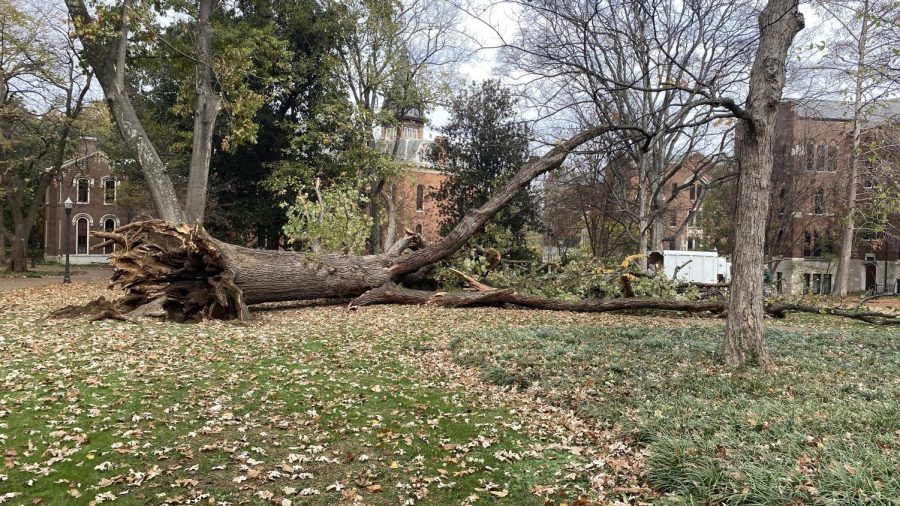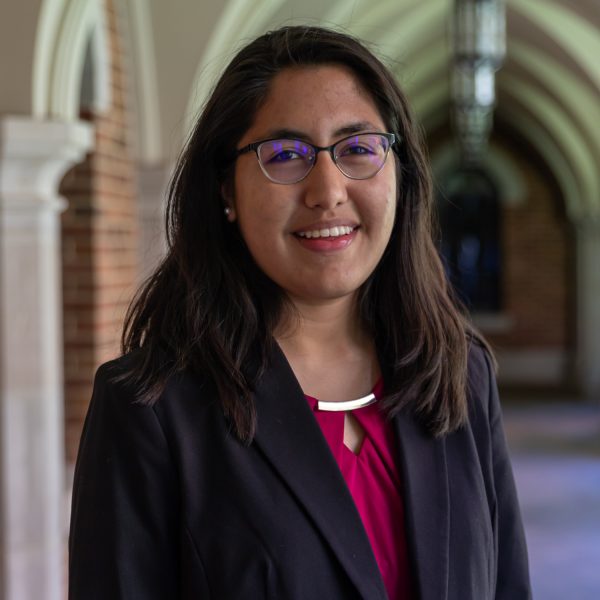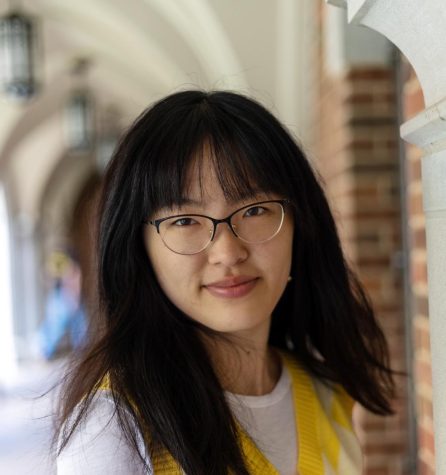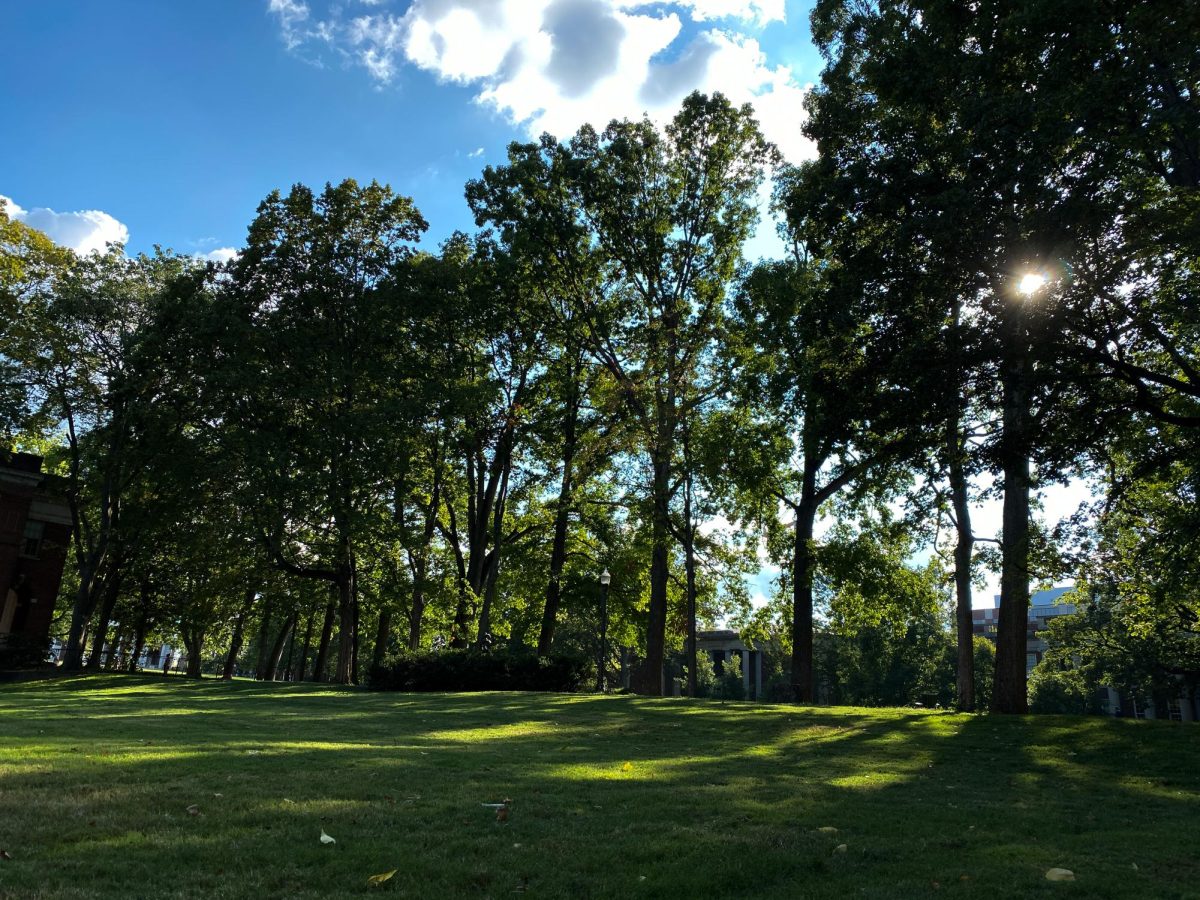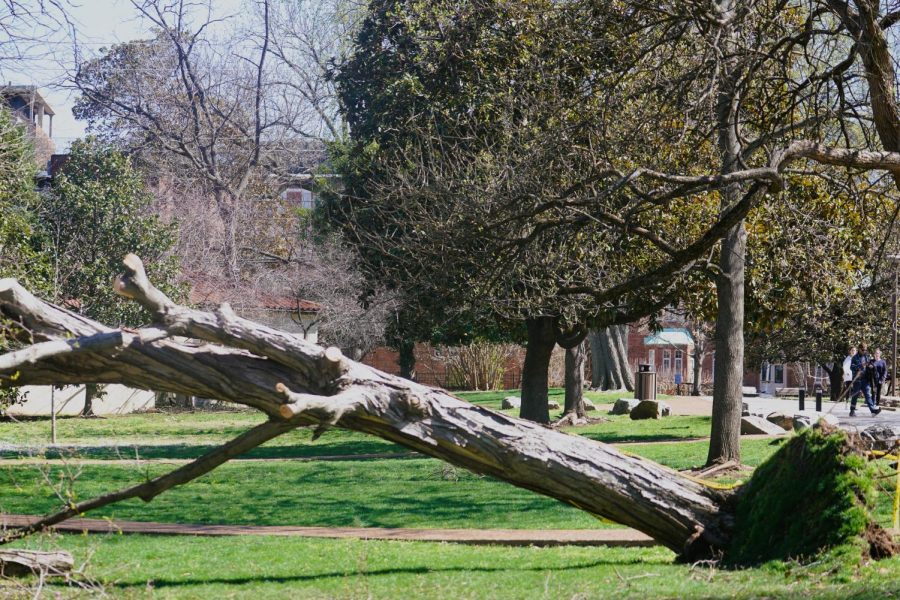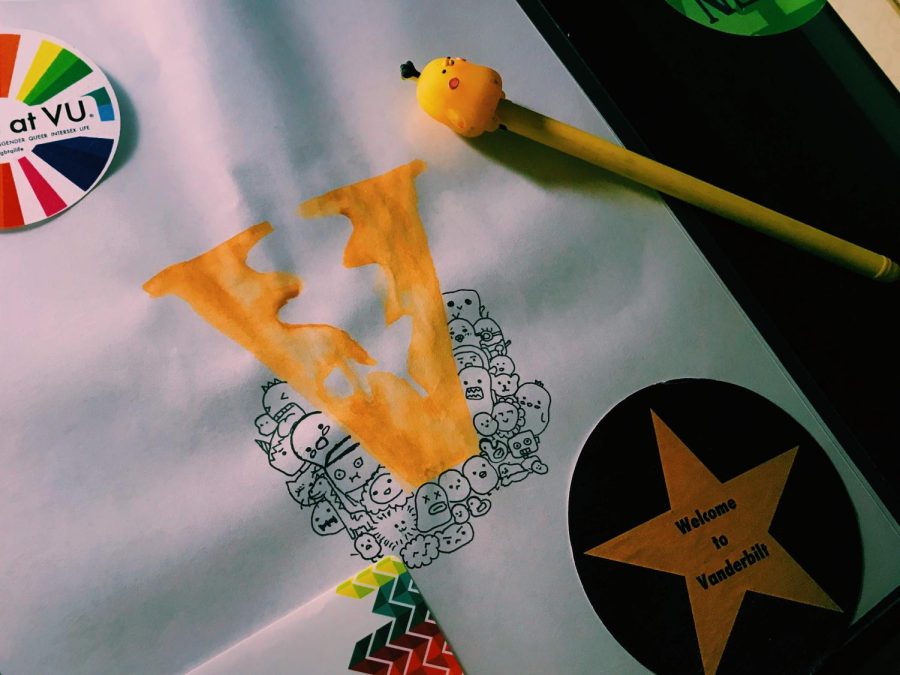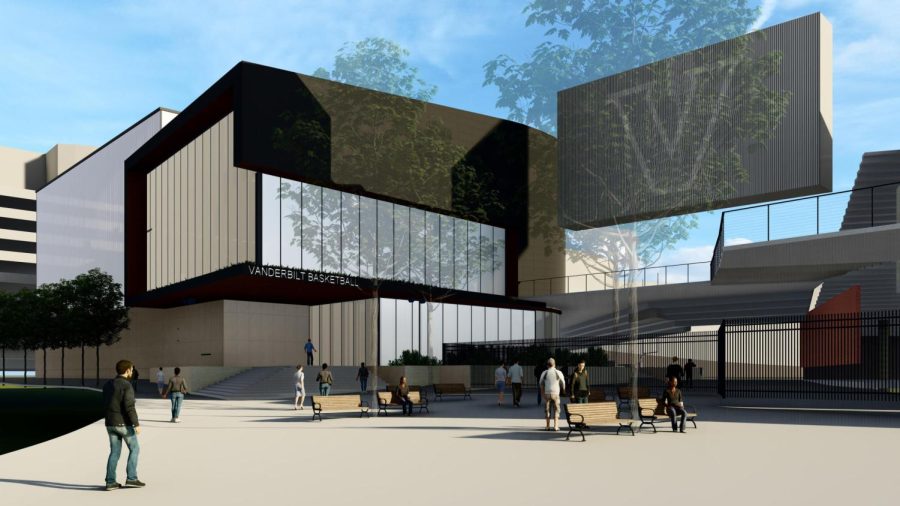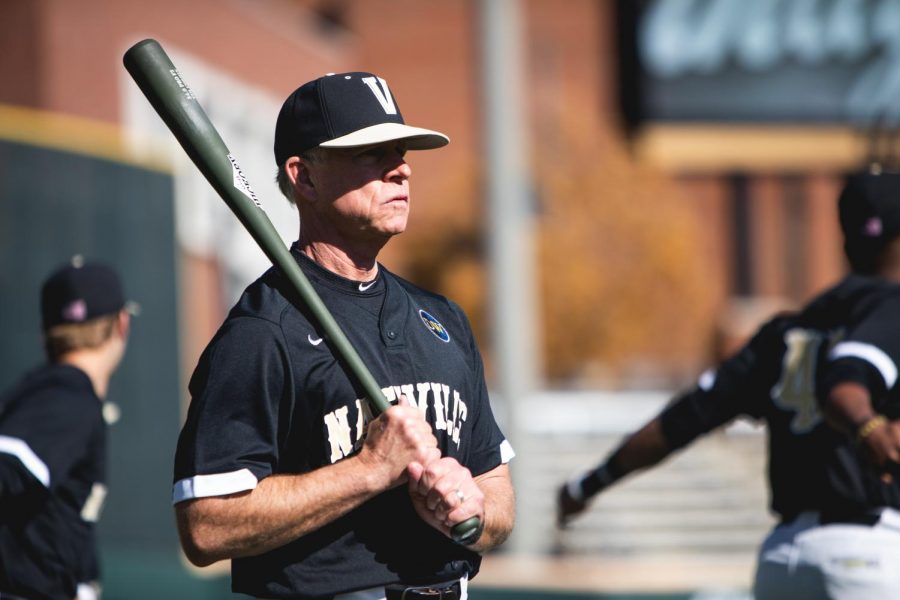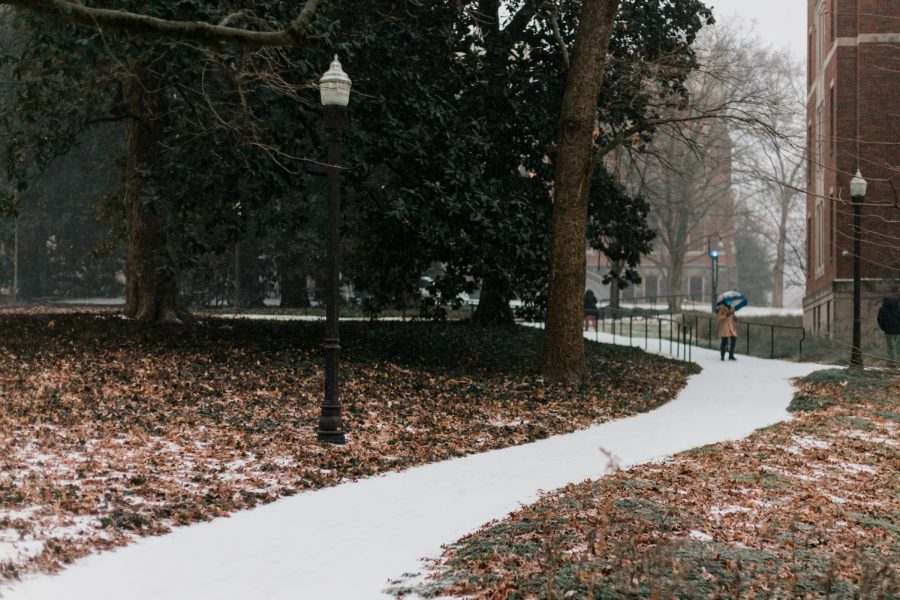Vanderbilt’s Bicentennial Oak, the only tree on campus to predate the university and the country, collapsed on the evening of Nov. 12. A Vanderbilt Instagram post on Nov. 14 reads that the tree fell due to “age-related decay.”
At 82 feet tall, the tree was among the largest trees on campus. Since it fell, students have visited it, which now lies on its side on the lawn in front of Rand Dining Hall. The tree can be seen as hollow inside and fungus appears to have infected its roots. Two days after the tree’s falling, Vanderbilt announced that it was ranked by the Princeton Review as the No. 7 “top green college” in the nation.
In the Instagram post, the university said it plans to honor the tree’s legacy in the next few months. Vanderbilt’s Facilities Department sent the same message to The Hustler as a university statement on Nov. 15.
“Usable wood from the tree is being collected for possible future reuse,” the statement reads. “In the coming months, the university will thoughtfully plan for the future of the location where the Bicentennial Oak stood. This planning will include components for the memorialization and recognition of oak’s place in the history of Vanderbilt.”
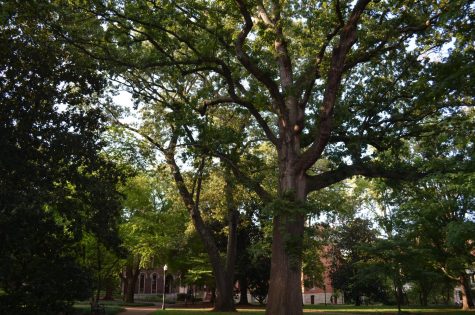
In October 2016, the Tennessee Urban Forestry Council officially added the tree to the Landmark and Historic Tree Register, which promotes awareness of the historic significance of trees in Tennessee landscapes.
Judson Newbern, Nashville Tree Conservation Corps executive board member and former Vanderbilt deputy vice chancellor for facilities and environmental affairs, said he was responsible for overseeing care of the oak for 31 years until 2016.
“That tree provided a powerful testimonial of how important campuses are as sanctuaries that provide stable settings where trees that need centuries to play out their story can flourish. Vanderbilt is to be commended and also encouraged to stay alert in protecting and investing in those other campus trees that hold the potential to grow so majestically themselves,” Newbern said. “How many people living and gone must have had special moments letting that special creation serve as their witness?”
Newbern stressed the importance of using the tree’s death to bolster conservation efforts. The Nashville Tree Advisory Committee estimates that Nashville is losing 50,000 trees annually as a result of its rapid development.
“As hard as it is to lose the Bicentennial Bur Oak, using this moment to focus on better measures for retaining all of the trees and arboreal resources we have in Davidson County, where thousands of trees are demolished to development each year, would be the right way to pay tribute to this oak,” Newbern said.
Junior Scott Coberly said he is planning a candlelight vigil for the tree on Nov. 16 at 6 p.m. CST.
“I loved that tree and it deserves something. I’m bringing flowers to lay at its trunk, and we can have a 250-second moment of silence,” Coberly said. “It was such an awe-inspiring piece of nature, it’s so devastating that it fell.”
Senior Rahan Arasteh called the oak’s death “heartbreaking,” drawing connections between the tree’s death and other changes on campus under Chancellor Daniel Diermeier’s leadership, including the transition to a new logo.
“We have gone from a university which cared about its history, culture and impact to a corporate entity, which uses the photo of a now-dead tree to brag about being a green college,” Arasteh said. “It is incredibly symbolic that during our full year with a ‘History Channel’ logo, deemphasizing our connections to nature, our most iconic tree kneels over, hollowed out with broken roots.”
Meanwhile, senior and Students Promoting Environmental Awareness and Responsibility president Andrei Olaru said he does not think the tree’s falling is too sad because it was near the end of its life cycle. He instead emphasized the importance of appreciating nature and advocating for the environment.
“Oftentimes, overworked elite university students don’t have the headspace to think about the bigger picture—that we’re a small part of this species, this planet, and that we’re only living in a tiny speck of the geologic timescale,” Olaru said. “But this is a good opportunity to remember that we can appreciate trees while they’re here! Go on tree tours, think about the complex network of systems that connect all things and time periods and think about how you can advocate for positive change while you’re alive on this planet.”
Sophomore Samantha McLoughlin said she was shocked to hear that the tree had fallen.
“I feel like I’ve walked by the tree on my way to class so many times that it’s going to feel wrong to see it gone,” McLoughlin said. “I definitely feel like we’ve lost a member of our community!”
Sophomore Leo Huang, who recently took a historical tree tour as part of his Scenes of Nashville course, similarly expressed remorse over the loss of the tree and said he wonders what will emerge from its legacy.
“I find it strange how little we know about the history of our campus as students even though we live, eat and study here,” Huang said. “I’ve come to realize that this was the only tree that predated the university, representing strength through time. Now that it’s gone like our acorn and oak leaf, what can we expect from this new era?”
Like Huang, Arasteh questioned what the future holds for Vanderbilt without the tree.
“The tree was great, and its loss does substantially take away from Vanderbilt’s vibes. However, its death comes at a time where the symbolism is much more poignant than any other time in Vanderbilt’s history,” Arasteh said. “I hope we find our ‘Vanderbilt Way’ again soon, lest we become Diermeier University instead.”

